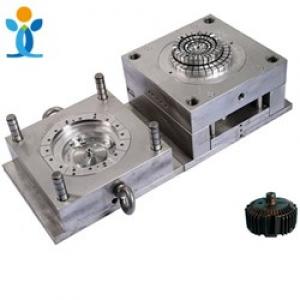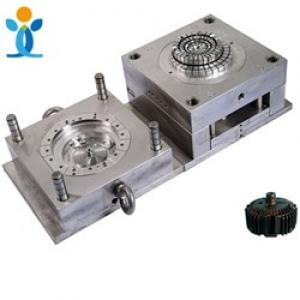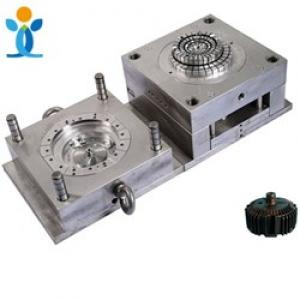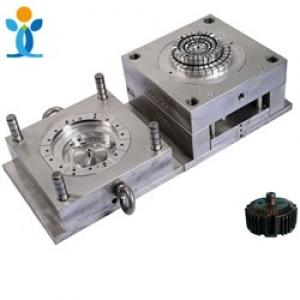analysis and solution of bubbles in plastic injection
analysis and solution of bubbles in plastic injection
In injection molding, bubble is not a very common defect for the general small processing workshop. Bubbles mainly appear in non large transparent products. Small transparent products are not easy to produce bubbles, but non transparent products are usually not required.
Products that usually produce bubbles: products made of transparent materials, large transparent products (surface appearance products), and the surface layer of thin-walled products. The appearance of bubbles will seriously affect the quality and appearance of products. For technicians, when bubbles appear in products, it is often not possible to reduce the speed and melt temperature. The debugging of transparent products is also one of the most difficult defects in injection molding.1: Identification method of bubble and vacuum bubble
Different from the vacuum bubble (shrinkage pit), the vacuum bubble is a vacuum bubble formed by the uneven shrinkage caused by the uneven wall thickness of the product after the injection molding filling and cooling. In fact, there is no air inside the product, that is, the shrinkage pit. Bubbles usually appear at the junction of fusion marks or the filling end of products, because there is too much gas in the mold, which can not be emptied when filling. Especially for products with large volume, large bubbles will be formed, and there will be a bang bang explosion after the products are broken.
To sum up, most of the products are bubbles when opening the mold. If there is no bubble after the products are taken out, and the bubble after a period of cooling is a vacuum bubble (shrinkage pit). Vacuum bubble usually appears in the place with thick tendon, and exists in a single form. Bubbles appear at the end of the product or in the intersection area, and exist in multiple places. Therefore, it is very helpful to know exactly what kind of bubble is in the process of adjusting the machine.
2: Cause analysis and solution of bubbles in plastic products
1. Too much air is mixed in the process of screw plasticization
Cause analysis:
a) In the process of screw plasticization, when the storage speed is too fast, or the back pressure of the storage material is too low, the raw material enters the plasticization section of the barrel too early, so that it enters too much air. In the metering section, gas and molten material are mixed together, so that a large amount of air cannot be discharged in the gap between the sprue sleeve and the nozzle. In the injection filling, gas and molten material are injected into the mold cavity at the same time, which is the bubble formed by the product.
resolvent:
b) Screw rotation speed is too fast, reduce screw speed.
c) The back pressure is too low. Increase the back pressure according to the process standard.
2. Excessive moisture in the melt
Causes:
a) For the raw materials with improper storage and high moisture absorption, if the moisture content of the raw materials is too large, they are not fully dried before injection molding, and high temperature hydrolysis occurs in the barrel, and the generated gas is wrapped into the dissolving material.
b) The thermal stability of the plastics is poor. The structure of the added raw materials mixed with the recycled materials is loose, and the air is contained in the particles.
c) The proportion of recycled materials added exceeds the process standard, generally no more than 20% of the raw material ratio.
resolvent:
a) Check whether the barrel drying system is normal, and fully dry the raw materials according to the process.
b) Reduce the barrel temperature properly.
c) Reduce the injection speed properly.
d) Increase the back pressure of material storage properly.
3. Thermal degradation of materials
Cause analysis:
a) The thermal degradation of materials due to too high barrel temperature setting (uncontrolled heating device).
b) The thermal degradation of the melt caused by too long retention time in the barrel.
c) During the injection filling, the shear heat produced by the injection speed is too fast, which makes the material degrade, usually near the gate.
d) The friction heat produced by the rotation of the screw with too large back pressure of the storage material and the thermal degradation.
resolvent:
a) Reduce the barrel temperature properly.
b) Reduce the abnormal shutdown and shorten the molding cycle time. Generally, the shutdown time of the molten material in the barrel shall not exceed five minutes. The injection can only be conducted after the dissolved material in the barrel is emptied.
c) Readjust process parameters, reduce injection speed and injection pressure.
d) Reduce the back pressure of material storage.
4. Poor mold exhaust
Cause analysis:
a) The mold exhaust is not complete, the parting surface is lack of necessary exhaust groove, or the exhaust channel is blocked and deformed, while the deep bone position of the product is not provided with necessary inserts and exhaust pins, so the melt can not be discharged when filling.
b) The bubble position occurs at the end of the fill where it meets, with a corner (slider).
c) Air valve type hot runner, the hot runner temperature is too high to produce bubbles generated by thermal decomposition.
d) The surface finish of the die is poor. When the dissolved material is filled into the die cavity, the friction force is large, which leads to the thermal decomposition of the material.
e) Local air entrapment bubble caused by improper gate location or too small gate and poor die exhaust.
resolvent:
a) According to the position of bubbles, increase or increase the exhaust slot to improve the exhaust situation of the mold.
b) In order to improve the mold structure and avoid sharp corners, multi-stage injection method should be adopted to control the injection pressure and speed in sections, so as to properly reduce the injection pressure and speed at the place where bubbles are generated.
c) Reduce the temperature of the heating ring of the hot runner, increase the back pressure of the material storage, reduce the entrapped gas in the material barrel, and increase the filling amount.
5. Improper injection process conditions
Cause analysis:
a) The injection molding speed is too fast, the gas in the mold is not discharged in time, and remains in the molten material of the mold, resulting in trapped gas bubbles.
b) If the temperature of the barrel is too high, the material fluidity will be enhanced, and the material fluidity will exceed the original actual fluidity.
c) When the back pressure of the material is too large, the melt temperature becomes high, which leads to the increase of the fluidity.
d) The pressure of die reduction is too large, the lock of die is too tight, and the gas can not be evacuated.
resolvent:
a) To increase the exhaust depth, multi-stage injection should be used to reduce the injection pressure and speed at the place where bubbles are generated.
b) Set the temperature according to the material process, detect the actual melt temperature if necessary, and reduce the possibility of melt thermal decomposition.
c) If the back pressure is too high, the melt will undergo thermal degradation and generate bubbles. If the back pressure is too small, it is easy to generate bubbles due to air entrainment. The back pressure value should be set according to the material process.
d. ) reducing the clamping pressure can obviously solve the problem of mould entrapment, but it is also easy to cause other process defects, scorch and burr.
3、 Application of actual cases
1. Air trapped at the end of the product
Cause analysis:
a) Solution injection speed is too fast.
b) Poor mold exhaust.
Solution:
a) Readjust the process, use the staged injection, medium speed filling and low speed filling to fill up the product and exhaust the gas.
b) If the mold temperature is too high, reduce the temperature of the hot runner temperature control box.
c) Remove the slider to increase the exhaust at the slider and increase the exhaust slot.
2. Air trapped in the gate of hot runner products
Cause analysis:
a) There is air in the melt.
b) The injection speed of the front-end solution is too fast.
c) Excessive material temperature (edge of material decomposition or decomposition).
d) Solution viscosity is too high.
resolvent:
a) Reduce the injection speed of the solution and fill the mold slowly at the front end.
b) If the mold temperature is too high, reduce the temperature of the hot runner temperature control box.
c) When the machine is started, the solution in the flow channel shall be emptied to avoid the solution thermal decomposition caused by shutdown.
d) Properly increase the back pressure, make the material in the shooting cylinder uniformly compacted, and empty the air in the rubber to increase the sol density.
e) Polish the ball surface of air needle to prevent air needle from sticking.




